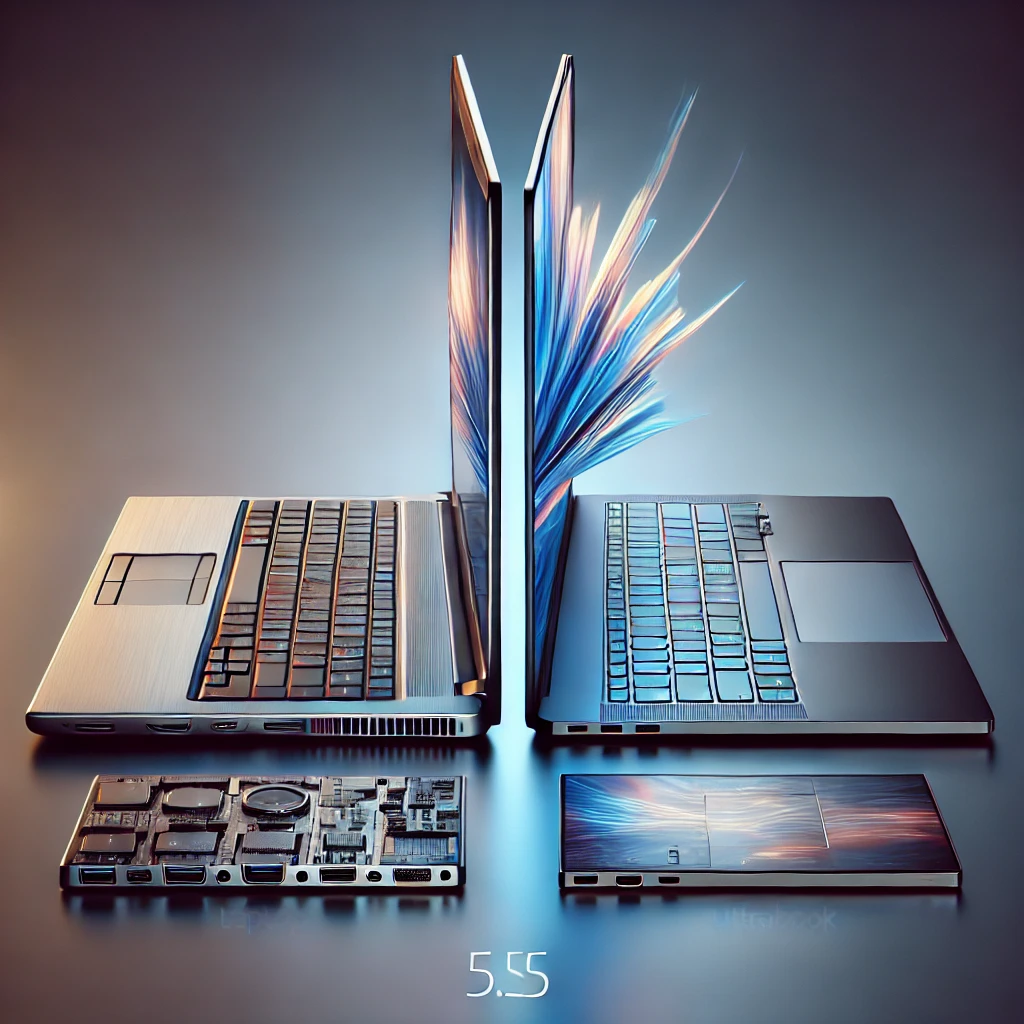Laptops and ultrabooks are both portable computing devices, but they have some key differences in terms of design, performance, and use cases.

Here’s a breakdown of each:
Laptops
Laptops are general-purpose computers that offer a balance of portability and functionality. They are widely used for everyday tasks like work, study, gaming, and entertainment.
Key Features of Laptops:
1. Variety of Sizes: Laptops come in various screen sizes, typically ranging from 13 inches to 17 inches.
2. Performance: Laptops can range from budget-friendly models with basic processors and RAM to high-performance models with advanced graphics, faster processors, and larger storage for gaming or content creation.
3. Battery Life: Battery life varies widely, with average laptops offering 5-10 hours of usage on a single charge.
4. Ports and Connectivity: Laptops usually come with more ports (USB-A, USB-C, HDMI, etc.), allowing for greater flexibility in connecting external devices.
5. Weight: Laptops are typically heavier than ultrabooks, often weighing between 3 to 6 pounds (1.3 to 2.7 kg), depending on the size and configuration.
6. Price: Laptops come in a wide range of prices, making them accessible to a wide range of budgets.
Popular Laptop Models:
Dell Inspiron: Affordable and versatile for everyday tasks.
HP Pavilion: Known for solid performance in both budget and mid-range markets.Acer Aspire: Offers great value for users who need basic computing without breaking the bank.
Lenovo IdeaPad: Provides a balance of performance and cost.
UltrabooksUltrabooks are a subset of laptops that emphasize portability, thinness, and long battery life, often with a focus on high-end features.
They are designed for users who prioritize sleek designs and on-the-go convenience.
Key Features of Ultrabooks:
1. Slim and Lightweight: Ultrabooks are designed to be thinner and lighter than traditional laptops. They usually weigh between 2 to 3 pounds (0.9 to 1.4 kg), making them easy to carry around.
2. Performance: Ultrabooks typically use lower-power processors to balance performance and battery life. However, many now include powerful processors (Intel Core i5/i7 or equivalent AMD chips) for multitasking, light gaming, and professional tasks.
3. Battery Life: Ultrabooks are known for their impressive battery life, often lasting 10-15 hours on a single charge, depending on usage.
4. Portability: The slim form factor and light weight make ultrabooks ideal for professionals, travelers, and students who need a portable device without sacrificing too much performance.
5. Premium Build Quality: Ultrabooks are often made from high-quality materials such as aluminum or magnesium alloy for a premium feel.
6. Fewer Ports: Due to their thin design, ultrabooks tend to have fewer ports than regular laptops. However, they typically have USB-C, Thunderbolt, and HDMI for connectivity.
Popular Ultrabook Models:
Apple MacBook Air: One of the most well-known ultrabooks, praised for its thin design, long battery life, and high build quality.
Dell XPS 13: Known for its slim design, powerful specs, and stunning display, the XPS 13 is a top choice among ultrabooks.
HP Spectre x360: A 2-in-1 ultrabook with a convertible design, allowing it to function as both a laptop and a tablet.
Lenovo ThinkPad X1 Carbon: A business-focused ultrabook known for its durability, lightweight design, and excellent keyboard.
Choosing Between Laptops and Ultrabooks:Go for a Laptop if you need more ports, a wider variety of sizes, and the ability to customize for higher performance (e.g., gaming, video editing, etc.) at a more affordable price.
Go for an Ultrabook if portability, design, and long battery life are your top priorities, and you’re willing to pay a premium for a sleek, powerful device that’s easy to carry around and ideal for light professional work.

